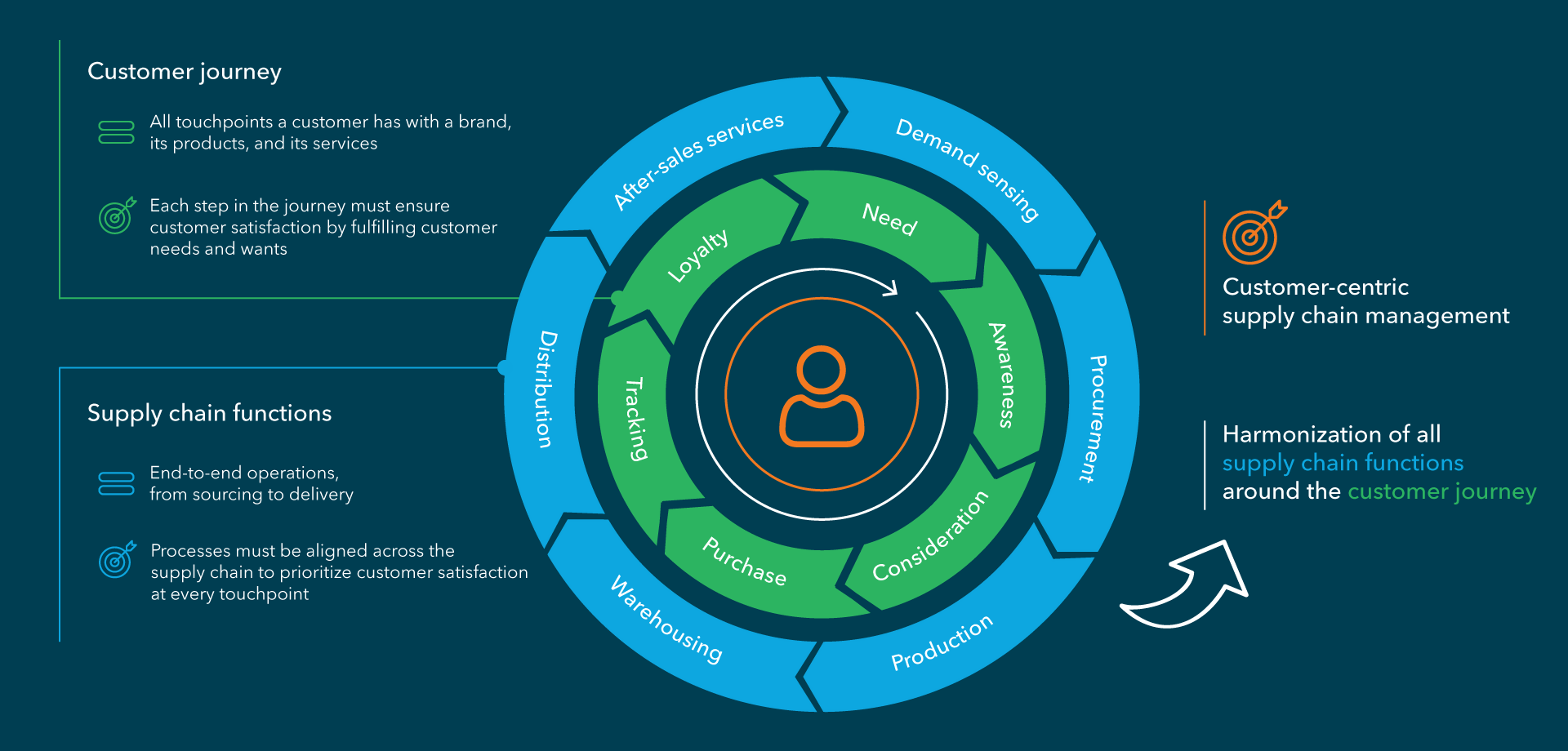Define the customer journey
by mapping customer requirements and their impact on the supply chain
In our fast-paced world, adaptation is fundamental for innovation and business growth. Across markets, industries and business models, a shift in stakeholder demands can be observed around the globe:
- Greater customer expectations: Consumers highly value products and services that are tailored to their needs. They want goods or services to be available when needed and prefer transparent delivery.
- Changing business models: Businesses must adjust their operating models to meet changing customer demands. This could include launching new sales channels, implementing customer retention strategies, relying on data-driven decision-making, and prioritizing speed and value creation over cost performance.
- New environmental regulations: Governments and regulatory agencies pursue green economy goals by introducing measures to reduce environmental risks. These include supplier traceability standards, CO2 certificates, labor reforms and strict quality norms.
The key enabler to address these changing requirements is a redefined supply chain management (SCM) that fulfils the customer journey: Customer-centric supply chain management.
The customer journey is defined as the totality of touchpoints a customer has with a brand, its products and its services. It is crucial that each step in the journey fully satisfies the customer’s requirements and expectations.
SCM, which includes end-to-end operations from sourcing to delivery, must be aligned in a way that ensures customer satisfaction at every touchpoint. In other words, customer-centric SCM is the harmonization of all supply chain functions around a customer journey.
This harmonization begins with mapping every step on the customer journey along with the corresponding supply chain activities. For instance, in order to provide e-commerce customers with real-time information on product availability or order tracking, it is crucial to have data available on actual inventory levels and transportation. The first step is to link that data across the involved computer systems and applications.
Customer-centric SCM relies on the effective use of two types of data: consumer data (including orders, requirements, personal details, etc.) and supply chain data (like forecasts, production schedules, inventory levels, risk assessments, transportation, etc.). Those data need to be processed on three levels: systems, processes, and organization. In the end, customer-centric SCM ensures availability, transmission and analysis of the right data to draw the most accurate conclusions at the right time.
Three steps to design a customer-centric supply chain
In recent years, 4flow has successfully guided customers through the transformation to a customer-centric supply chain in three steps:
Identify fields of action for supply chain transformation
by limiting impact on systems, processes and the organization and identifying optimization potential
Design customer-centric systems, processes and organization
by focusing on the overall target picture and operating model
Customer-centric supply chains bring benefits on multiple levels. By harmonizing supply chain activities around the customer journey, supply chain management becomes much more flexible. By offering customers what they need, when they need it, and in the right quantity and quality, businesses gain a crucial competitive advantage. As a result, businesses see improved brand awareness among customers, increased satisfaction and lasting customer retention. Customer-centric SCM results in top- and bottom-line benefits with improved sales and a lowered cost base at the same time.
What 4flow offers:
- Collection of customer requirements and creation of a target customer journey*
- Assessment of customer journey options from a supply chain perspective
- Assessment of current supply chain systems, processes and organizational structures
- Definition of upgrade potentials across the supply chain
- Development of a SCM target picture and operating model
- Setup of transformation roadmap, resource plan and business case
- Initiation of transformation program including the implementation of measures, monitoring of benefits, finetuning of the operating model, and change management
*If required, in collaboration with one of 4flow’s trusted brand agency partners

